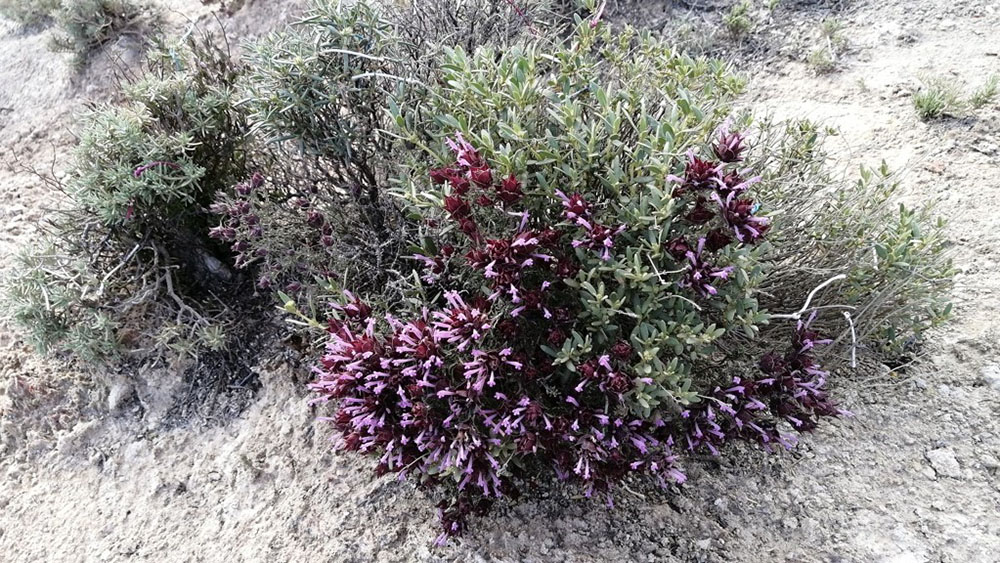A research team from the Centre for Research on Desertification (CIDE, UV-CSIC-GVA) and the Institute of Corpuscular Physics (IFIC, UV-CSIC) has presented the first application of Artificial Generative Intelligence to the prediction of coexistence patterns of plants. The models developed will make it possible to predict the consequences of the loss of some species on the survival of others. The work has been published in the journal Methods in Ecology and Evolution.
Earth’s species are interconnected with each other. Each plant, each animal or each tiny bacterium lives in intimate connection with other species, so that tens, hundreds or even thousands of species that interact directly and indirectly can coexist in a community. Given the current loss of biodiversity, it is essential to know the dynamics of these interactions and the relationship patterns between different species in an ecosystem, the so-called ecological networks.
In this field, a research team from CIDE –a joint centre of the University of Valencia, the CSIC and the Valencian Government– and from the IFIC –a joint centre of the University of Valencia and the CSIC– has carried out a study that contributes to the prediction of these patterns through the use of computing techniques in Artificial Intelligence called Machine Learning. Machine Learning can help unravel this multitude of interconnections in ecological networks thanks to its great ability to detect patterns beyond traditional statistics. And the developed models give off correct predictions about semi-arid ecosystems such as those present in the Valencian Community.
“In this study we explore the use of a set of cutting-edge Machine Learning techniques, called Generative Artificial Intelligence (GenAI), to predict patterns of species coexistence that could be used to unravel the mechanisms underlying community assembly”, explains Miguel Verdú, CSIC researcher at CIDE. For her part, Verónica Sanz, ‘Beatriz Galindo Distinguished Researcher’ of the University of Valencia at the IFIC, highlights the enormous capacity of unsupervised learning. “By being trained with the observations made by CIDE, our algorithms learned very complex relationships, such as, for example, the fact that there are species that cooperate and facilitate repopulation, but that become competitors when certain new species appear.”
A complex reality
The study focuses on semi-arid ecosystems in Spain and the Valencian Community, which present as a peculiarity a vegetation structure in the form of patches. Generally, these patches start from pioneer species well adapted to demanding environmental conditions, which establish themselves first and facilitate colonisation by other species less resistant to these conditions.
In this study, 5,153 vegetation patches on gypsum and limestone soils were analysed, containing between 2 and 17 species per patch. The results allowed to obtain correct predictions about the relative abundance of patches with different species composition, the affinity of plant species with the soil and the role of indirect interactions of third and fourth order in the coexistence of pairs of species. In the latter case, it was observed that the positive effects of one species on another tended to be reduced in the presence of a third or fourth species.
The ability shown by the model to ‘learn’ the patterns of coexistence of species allows it to generate realistic predictions about complex patterns that would be difficult to detect in the field. “These models offer us a valuable opportunity to better understand the rules that govern how different species connect in natural ecosystems, and help to improve the prediction of the consequences of the loss of related species”, concludes Miguel Verdú.
Reference: Hirn, J., García, J. E., Montesinos-Navarro, A., Sánchez-Martín, R., Sanz, V. & Verdú, M. 2022. A Deep Generative Artificial Intelligence system to predict species coexistence patterns. Methods in Ecology and Evolution
https://besjournals.onlinelibrary.wiley.com/doi/10.1111/2041-210X.13827
FOTO: Patch of vegetation in which different plants coexist, some helping each other and others competing against each other/Author: Alicia Montesinos


